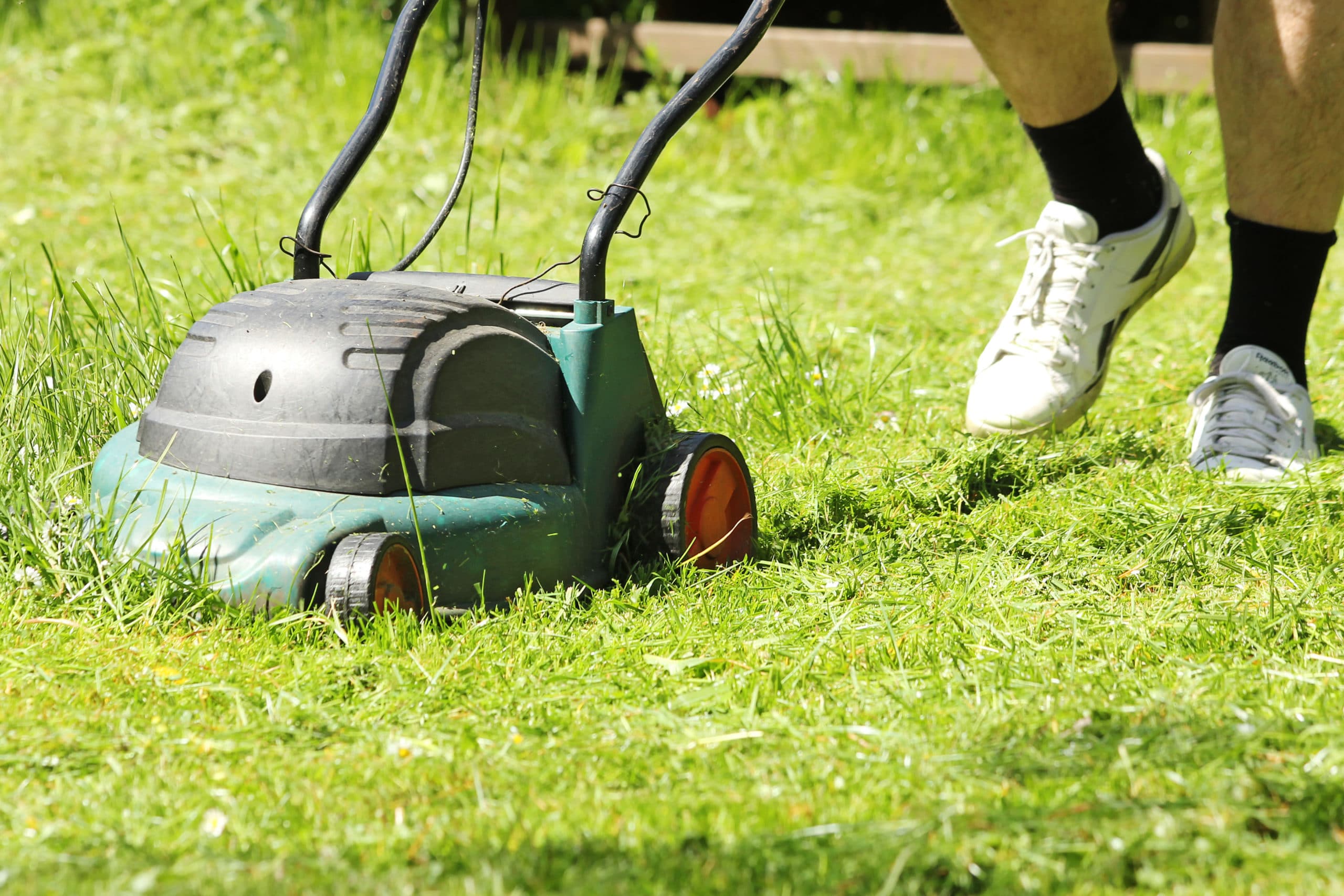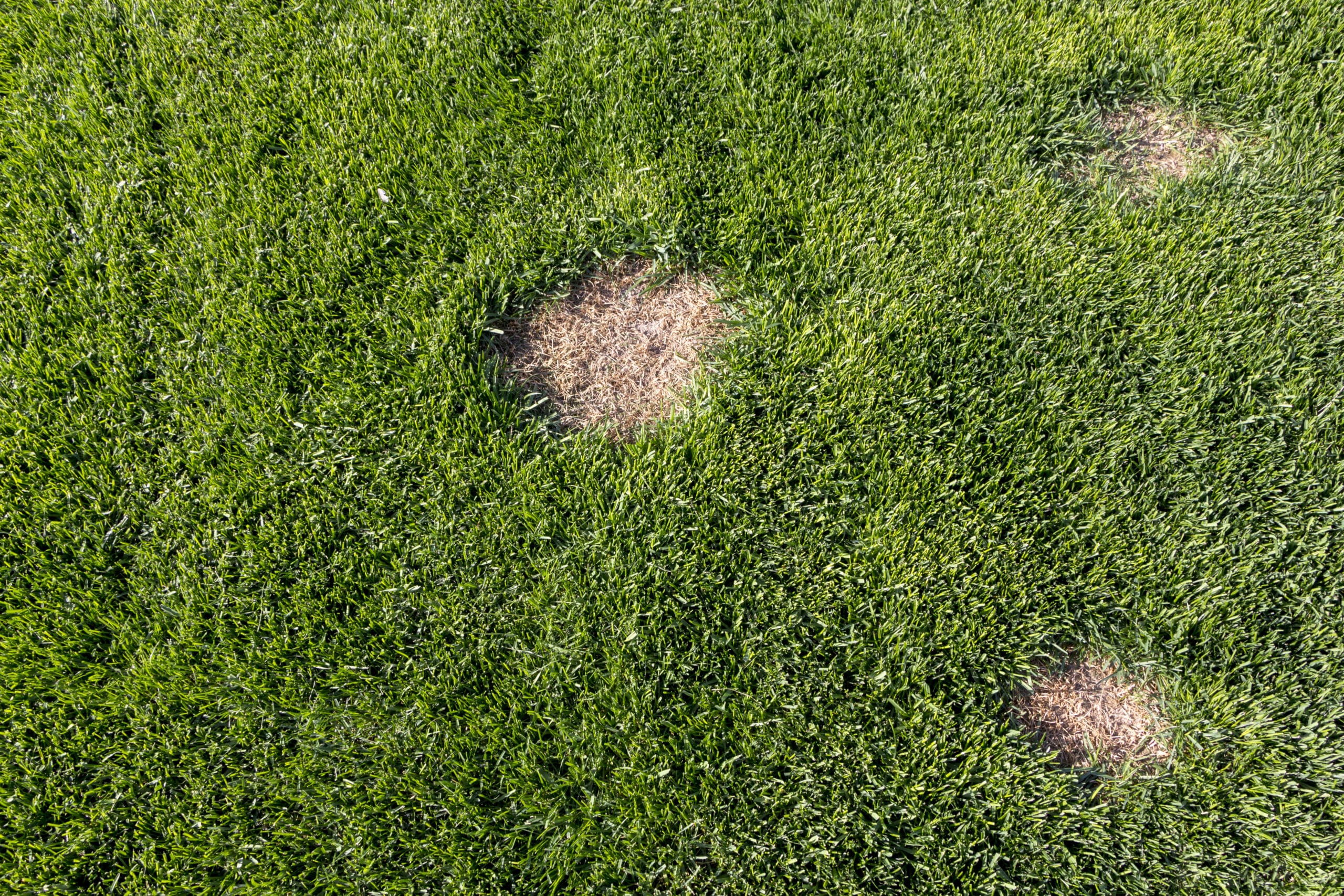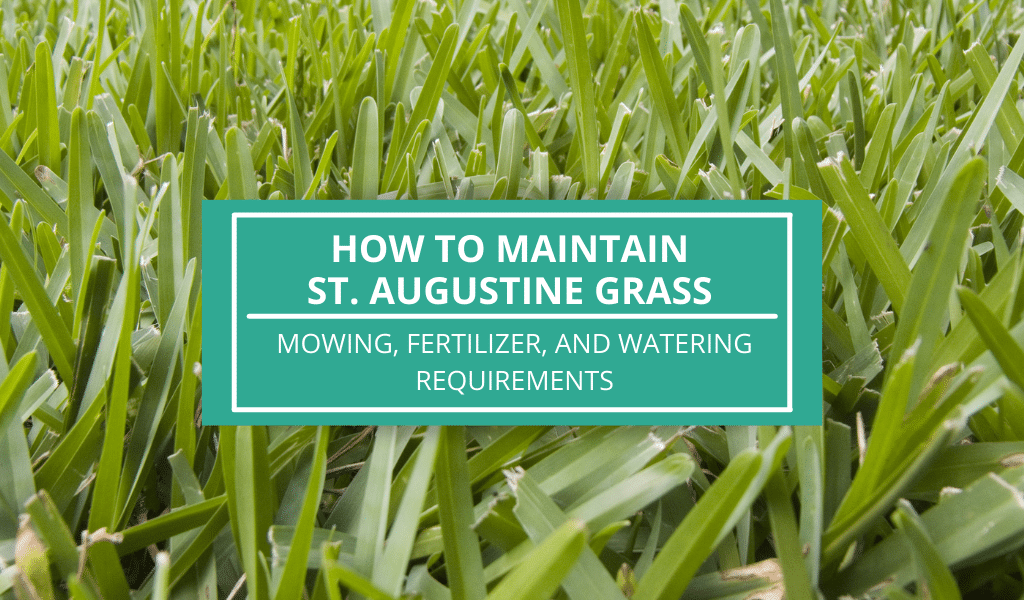St. Augustine Grass, scientific name stenotaphrum secundatum, is extremely common in the southern United States as it is a grass that loves humid, tropical regions. In the US, it comes in different varieties including Raleigh, Seville, Palmetto, Floratam, and Texas Common.
Each of these varieties is more suited to a particular region. It is a spiky, thick bladed grass that can also be found in Australia, Mexico, and Central and South America. It is a generally medium to high maintenance grass that will crowd out weeds and other grasses. St. Augustine grass loves moisture and can tolerate salt so it can be found by lagoons, marshes, or on shorelines. Although it loves moisture, it will die if in waterlogged soil.
Spreading through runners, sometimes called stolons, St. Augustine Grass will take over if it is happy. It is also called carpetgrass due to its thick nature. Although it does thrive in high moisture regions, it can also put up with low moisture and scorching temperatures like those found in Texas.
St. Augustine grass has a dark green and what sometimes be perceived as a blue color.
How To Care For St. Augustine Grass
Mowing

Not only is mowing your lawn visually appealing, but it is also a necessary maintenance for keeping your St. Augustine grass healthy.
As the grass starts to turn green in the spring, you’ll want to immediately start a grass cutting routine to keep your St. Augustine grass in shape. The Texas Agricultural Extension Service states that you should, “set the mowing height at 2 ½ to 3 inches (3 to 3 ½ inches in shady lawns).”
If you mow St. Augustine grass frequently, it will grow stronger and you’ll get an even thicker, carpet like look. Making sure you mow frequently will also help to remove pests and debris. Any blades that were cut can be left on the lawn and will decompose quickly and help to fertilize.
If you’re unsure of a time frame for your mowing schedule, it is recommended that it should be mowed weekly during the summer season. Be sure to stay on top of this as summertime is when St. Augustine grass grows the quickest. In contrast, winter mowing could occur every two weeks.
Fertilizers
Before fertilizing, it can be important that you first test your soil to see what nutrients are already present. This small test could save your grass from dying from over-fertilizing. Important nutrients to add are phosphorus, potassium, and nitrogen.
First fertilize your grass after it has turned fully green in the spring. If you fertilize before this, it could damage your grass. If you do not see the need to test your soil, you can simply use an all-purpose lawn fertilizer that is in a ratio of 3-1-2 of nitrogen, phosphorus, and potassium. Nitrogen is the most important nutrient, so it is important that the fertilizer you use is high in it.
A good tool for determining how much fertilizer you need is to divide 100 by the first number of your ratio. This number will then be how many pounds you need per 1,000 square feet. For example, 100/3 = around 33 pounds per 1,000 sq. ft. of 3-1-2 fertilizer.
Some examples of the best fertilizers to check out include Scotts Southern Turf Builder Lawn Food, and Milorganite Slow Release Nitrogen Fertilizer.
Watering
St. Augustine grass loves moisture, but not being waterlogged. Therefore, it is important to only water if the lawn needs it. In wet, moist regions like Florida, the natural rain that the area receives may be more than enough. Meanwhile in Texas, the grass may need a schedule of routine manual watering due to symptoms of drought.
Symptoms of drought in St. Augustine grass include the grass turning a blueish or gray color, brown spots, thinning, the blades fold or roll, or the grass not bouncing back as quickly after being stepped on. It is recommended in dry areas like Texas to only water when these symptoms begin to show.
When you do water St. Augustine grass, give the soil a good soak, but do not flood it. If your area is dry, the Texas Agricultural Extension Service recommends a watering every 5-10 days.
Seeding/Propagation
St. Augustine grass spreads through runners called stolens. This will happen naturally and quickly in the summertime so there is no interference needed here. However, if you’re looking to add St. Augustine grass to an area that does not have any, you can do this through plugs, sod, and seed.
Plugs are small clumps of grass that when placed relatively close together, will fill in and create a full carpet. This is one of the most common ways of planting St. Augustine grass. It is recommended to place plugs 6 to 12 inches apart.
Another up and coming way to start a St. Augustine lawn is through seeds. However, this can be tougher as the lawn needs to be kept moist while it is establishing. A recommended St. Augustine grass seed spread rate is 1/3 to ½ pound per 1,000 square feet, preferably planted in early spring or late summer.
Common Problems and How to Avoid Them
Many of the issues mentioned below appear in your grass as a brown patch. However, being sure that you get to the root of the problem and find out the true factor causing the issue is the only way to solve it.
Weeds
As stated in the mowing section, if your grass is cut regularly, it will grow thick and eliminate most weeds naturally. Frequent mowing in the summer season is your best bet
Some of the most common weeds include henbit, clover, dollar weed, and chickweed. It is not recommended that you use herbicide if your area has high temperatures as this can be stressful for your grass. If you do see weeds, pull them by hand and resume a regular mowing routine to keep your grass strong and growing to overtake any small weeds. St. Augustine grass is known to be sensitive to herbicides so be careful not to use too much.
If you do wish to apply a herbicide, preemergent herbicides can be the most useful. These types of herbicides target weeds before they emerge from the ground. However, the other type of herbicide, a postemergent (targets weeds that have emerged from the ground) is not recommended as it can kill your grass. If you do want to use a postemergent, only use it before your grass greens up in the spring.
Brown Patch/Cold Damage

This is normally prevalent in the fall and is a result of your St. Augustine grass reacting to cold temperatures. This is a leaf disease that rots leaves attached to a particular runner. However, the root and runner usually remain healthy.
St. Augustine grass, like other grasses will normally recover naturally from brown patch or cold damage after temperatures return to their ideal. St. Augustine grass will go dormant in the winter due to the cold temperatures but will remain alive and return in the spring.
If you experience brown patch and do not wish to wait to have a healthy lawn again, you can always put new plugs in the area that was affected to speed up recovery.
Gray Leaf Spot
Gray Leaf Spot is caused by a fungal organism. Although added nitrogen can be very beneficial for your lawn, gray leaf spot can be accelerated by this. Blades affected by gray leaf spot will have yellow or gray spots or sections. Gray leaf spot will not occur in spring.
To fix this issue, stop applying nitrogen to your lawn and instead apply a fungicide.
Thatch
This is a layer of dead grass than can accumulate over time and rot your lawn. Usually, St. Augustine grass decomposes quickly. However, if you do see thatch occurring and it is more than 3/4 thick, remove this layer by using a vertical mower or scalping the lawn. If you do this, be sure that your grass is actively growing and can recover. The best time to do this would be in early spring such as April or May.
Pests
Grubs
These are prevalent in spring when the insect is growing and feasting. Grubs are the larvae form of beetles and hatch in the spring. These animals will feast on the roots of your grass resulting in the grass weakening and being able to be pulled out of the soil very easily. To check if you have grubs, simply dig up a small section. You will be able to find some near the surface easily. However, finding only one or two cannot cause widespread destruction to your lawn. If you have 5 or 6 grubs per square foot, this is where it can be an issue.
If you find an excessive number of grubs and your grass is suffering, you can use an insecticide that is made specifically for grubs. Do not choose an insecticide labeled to treat grubs right after they hatch. It is much better to treat from the end of June to mid-July.
Cinch Bugs
These are bugs that are completely black with a diamond-shaped patches on the wings. These insects love hot, sunny patches and are prevalent in the peak of the summer months. The grass will be brown and very dry in areas affected. A good way to find the difference between simply dehydrated grass and cinch bugs is that dehydrated grass will perk back up after watering while a cinch bug infested area will not. You will also be able to spot the cinch bugs in the area. If you do not see any cinch bugs, the brown patch could be caused by a different issue,
To fix this, apply an insecticide as soon as possible to the affected areas. Once the grass is damaged by the bugs, it will not grow back, and you will need to apply plugs or seeds to the barren sections.
Too Much Fertilizer

Over fertilizing St. Augustine grass can show up through excess thatch. You’ll need to mow your lawn quicker and the cut blades will not have enough time to decompose which could pose a threat. If you believe you are over fertilizing, test your soil to make sure that the correct amount of nutrients is applied.
An overfertilized lawn could be yellow. However, this yellowing will not show up in small patches on the blades like gray leaf spot. Instead, it will be large patches, or streaking. This yellowing is due to fertilizer burn.
To help your lawn recover, use a generous amount of water and refrain from fertilizing for a bit until everything recovers and you are sure the correct amount of fertilizer is being utilized. You can slowly soak the affected areas every day for a week to flush out any excess salts produced by the fertilizer. The lawn should turn back to green if the damage is not too bad. However, if the damage is severe you may need to replant the area using plugs or seeds.
Too Much Shade
Although St. Augustine grass can tolerate shade, too much of it will leave your lawn looking patchy, brown, barren, and dead. St. Augustine grass requires around at least 5-6 hours of full sun to thrive.
Normally, short, thick trees cause an issue with St. Augustine grass. However, larger, taller trees may allow the grass to survive because the sunlight could reach the grass in the morning or evening for a few hours.
There is no way to fix this issue. You could trim your bushes or trees but need to be especially careful not to trim too much as you could potentially kill them. Instead, it may be best to accept that these areas are not particularly suited to keeping St. Augustine grass alive and you can plant other shade loving plants such as hostas, hydrangeas, or ferns.
Final Thoughts
Keeping a lush lawn is almost an art form with so many different aspects to learn and leverage. St. Augustine grass is an especially interesting grass due to its thick blades and carpet like growth. Knowing the correct amounts of sunlight, water, fertilizer, and mowing can be tricky while also addressing pests and weeds. With the correct care, your St. Augustine lawn can be a vibrant green shag carpet.

